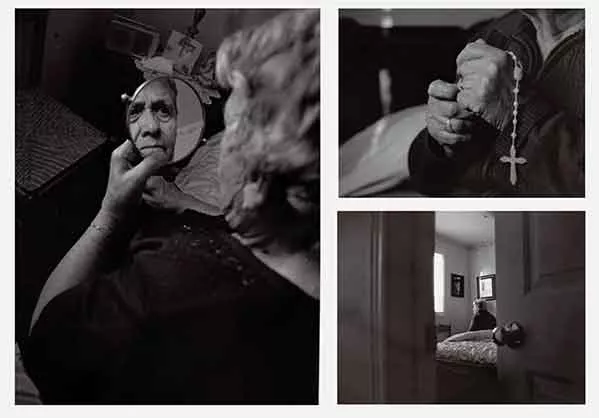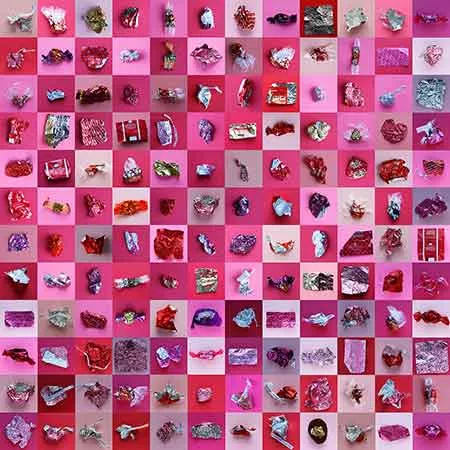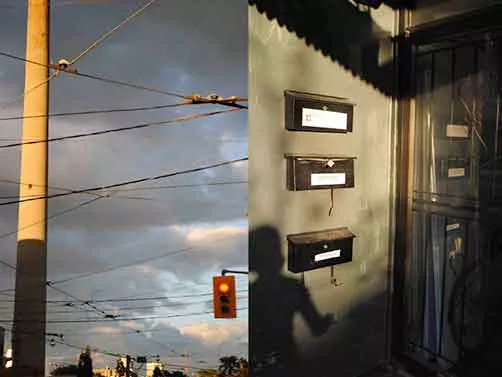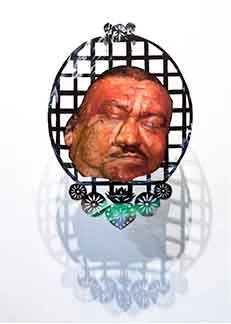In Photography 1 through Independent Investigations in Photography, students work with black-and-white analogue photography, digital photography and video in response to assigned and independent projects that foster creative problem solving and the development of a personal visual vocabulary. Students are encouraged to experiment and to use photography as a means of communication in the context of contemporary fine art practices.

Photography 1
Course Objectives

This is an introductory course in black-and-white photography as a tool for artistic expression. Students are instructed to the operation of a 35-mm SLR camera, film processing and making and finishing prints, and should come to understand photography as a medium for communication. Through lectures, demonstrations, group critiques and field trips, students will be introduced to the analysis of photographic imagery and the history of photography.
Course Structure
Weekly three-hour classes are composed of lectures, demonstrations, studio and lab time, individual consultations, group critiques and the occasional field trip to view contemporary work. Assignments focus on the application of methods and materials to the completion of projects that integrate technical and conceptual problem solving. Topics include environmental portraiture, still life, image and text, and camera-less photography. There are two in-class technical tests. Students also complete two short writing assignments: one on contemporary photography and one on historical photography.
Topics include:
- observational skills
- basic techniques in camera use such as apertures and shutter speeds, light meter, depth of field
- black-and-white film processing, health and safety issues, chemical action on film
- printing, paper types, contrast control, dodging and burning, darkroom manipulations
- studio lighting, main and fill lights, hard and soft light, controlling lighting contrast
- the manipulation of form and content and their interaction with each other
- the use of photographic techniques for the examination of subject matter
- an ability to articulate ideas related to contemporary photo and photo-based practice verbally and in writing
- an awareness of the relation between description and interpretation
- an awareness of major historical precedents
Course Outcomes
At the end of this course students should have acquired the basic skills necessary for the use of black-and-white photography as a means of communication. These include the techniques of camera and darkroom use and print finishing. Students should also be able to articulate ideas about their own work and that of others and to demonstrate a willingness to experiment and to exercise photography's capacity for metaphor.
Photography 2
Course Objectives

A continuation of Photography 1, this course further develops the use of camera handling and lighting techniques, along with light-sensitive and digital-imaging materials for visual communication and personal expression. Investigations of historical and contemporary uses of the
medium will emphasize both technical and aesthetic considerations.
To develop the student's ability to do the following:
- independently develop and execute their ideas in black-and-white photography
- expand and acquire skills in various photographic processes and formats including using basic skills in Photoshop, imovie, idvd and Powerpoint
- gain a further understanding of the critical issues surrounding the medium
Course Structure
This course is a continuation of the study of photography with an emphasis on the various genres within photography and lens-based art. Students learn a variety of printing methods including fibre-based printing, sequencing, multiples and other techniques that further develop the creative aspects of the medium. Experimental approaches to the use of the photographic image, ideas and content are emphasized. Discussions, critiques, presentations and readings encourage students to expand their analytical and creative skills. Theoretical readings and exercises in this course develop around the idea of 'photographic truth' and review photography's relationship to surveillance, archiving information, documentaries and photojournalism. Students are encouraged to begin to develop their own area of research and are required to submit a written proposal for their final major assignment.
Through problem-based learning, students are introduced to, made aware of or continue to explore the following techniques and skills:
Black and White:
- understanding of how light works to create images
- making a camera obscura room
- review of camera operations, equipment and care, and film processing
- pushing and pulling film
- fibre printing
- sandwiching negatives
- multiple printing
- ISO — what ISO may be most suitable for various situations: artwork, portraiture, landscape, street shooting
- Ruby Lith film
- negs made with handmade paper, slides
- incorporation of text with image
- black-border printing and other formatting treatments
- flipbook
Lighting:
- studio portrait lighting
- photographing 2-D artwork
Digital:
- camera handling
- photomontage
- digital presentations
- video editing
On completion of the course students should have achieved greater expertise in the following:
- understanding of historical and contemporary art practices
- manipulation of form and content
- varied approaches to photographs in series, sequences, varied multiple forms and forms of presentation
- intermediate techniques in camera use, black-and-white film processing, printing and lighting
- preparing to more independently generate their own ideas
- the ability to articulate and critically assess their own work and the work of their peers
Photography 3
Course Objectives

This course is designed develop a student's individual and independent approach to photography and video. An emphasis is placed on innovation and use of materials as they each apply to concept. In order to gain a better understanding of a personal approach in the wider context of contemporary art and society, the course deals with issues surrounding representation and photographic media. Discussions, readings and assigned projects revolve around postmodernist ideas of the body and photography and video's relationship to the notions of fetish, souvenir and desire. Students are encouraged to develop their own area of artistic research and are required to submit written proposals for all major assignments.
Course Structure
In the first term, students execute their ideas using only digital colour photography. Technical demonstrations and readings focus on aspects of digital photography including photomontaging and printing. The second term offers the student the opportunity to work on self-directed projects using either digital or analogue photography, and to extend ideas of photography to such areas such as experimental photographic processes, book works, video, integrating photography with other media, etc. Class discussions are initiated and developed around activities such as lectures, presentations, technical demonstrations, assigned readings and gallery visits; additionally, during the course, students research and present a 20- to 30-minute presentation on the work of a contemporary photographer and submit a written gallery proposal. Class critiques occur approximately four times each semester.
Students are introduced to the following ideas and skills:
Advanced camera handling and lighting:
- medium-format cameras and hand-held light meters
- lighting using quartz lights, strobes and portable flash units
Digital Image Making:
- digital SLR camera handling
- digital photomontage
- colour correction
- colour management
- digital printing
- video camera handling
- video editing and output
Additional:
- understanding of issues and ideas pertaining to photography as a form of representation
- preparing to work independently along with developing a further understanding of the issues surrounding each student's work
- career opportunities and artist venues
On completion of the course students should have achieved greater expertise in the following:
- understanding of the critical issues and ideas surrounding representation and the medium of photography
- understanding of historical and contemporary art practices
- preparing to generate their ideas independently
- skill in the execution of their artwork
- initiating conceptual development of sustained self-defined projects
- the ability to articulate and critically assess their own work and the work of their peers
Photography 4: Independent Investigations in Photography
Course Objectives
This course treats photography and video as media for the exploration and communication of ideas in the context of contemporary fine art practices. The objectives of the course are as follows: to foster independence in the making of self-directed, cohesive bodies of work; to develop critical and analytical skill as well as the ability to research ideas, methods and practices; and to help students articulate conceptual frameworks.
Course Structure

Weekly six-hour classes are made up of lectures, discussions, group critiques, individual consultations, seminars, studio and lab time and field trips. The course focuses on independent student production of lens-based artworks, as well as the completion of assigned projects. Direction for students' independent work is developed through the first term in project proposals consisting of test shootings, work prints, collected images, readings, writings and/or maquettes, etc. Focus in the second term is on production leading up to graduating exhibitions. Student work is accompanied by regular in-depth critiques, with an emphasis on generating a willingness to allow personal responses to work-in-progress to help determine artistic direction. Students also engage in research and presentations on contemporary photographic practice. There are regular discussions on assigned theoretical and critical readings. These are drawn from a variety of sources (i.e. contemporary visual art periodicals, exhibition catalogue essays, anthologies). Students are also introduced to professional practices in presenting work for making exhibition, granting and graduate school applications.
Course Outcomes
At the end of this course, students should have the ability to begin an independent art practice. They should be prepared to employ research techniques, and critical assessment in the development of their ideas and their material work. Students should also have the skills required for articulating ideas about their work and for presenting their work in a professional environment.
